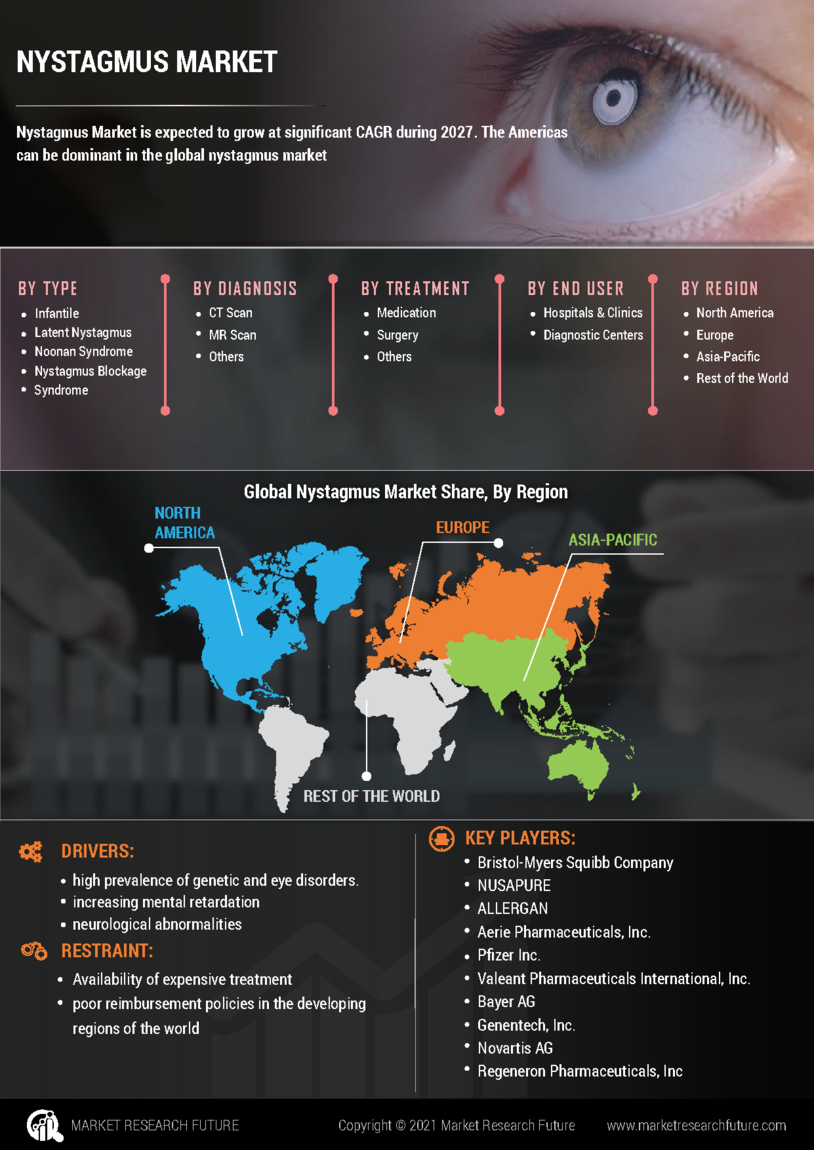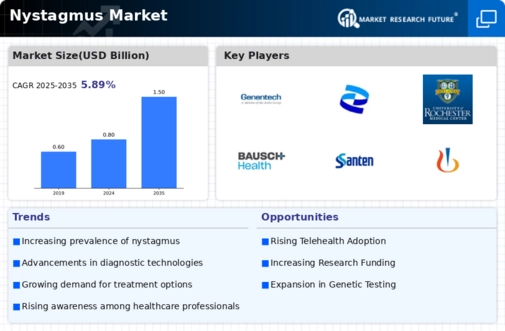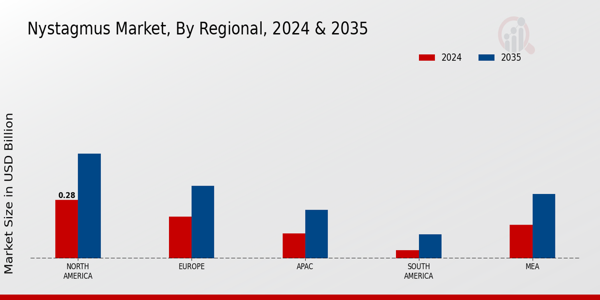Market Growth Projections
The Global Nystagmus Market Industry is poised for substantial growth, with projections indicating a market value of 0.8 USD Billion in 2024 and an anticipated increase to 1.5 USD Billion by 2035. This growth trajectory reflects a compound annual growth rate of 5.88% from 2025 to 2035. Factors contributing to this expansion include advancements in diagnostic technologies, increased awareness of nystagmus, and a growing investment in research and development. As the market evolves, stakeholders are likely to focus on innovative solutions to address the needs of patients affected by this condition.
Increasing Prevalence of Nystagmus
The Global Nystagmus Market Industry is experiencing growth due to the rising prevalence of nystagmus, a condition that affects eye movement and vision. Recent estimates indicate that approximately 1 in 1,000 individuals are affected by this disorder, leading to a heightened demand for diagnostic and therapeutic solutions. As awareness increases, healthcare providers are more likely to identify and treat nystagmus, thereby expanding the market. This trend is expected to contribute to the market's valuation, projected to reach 0.8 USD Billion in 2024, reflecting a growing recognition of the condition and its impact on quality of life.
Advancements in Diagnostic Technologies
Technological innovations in diagnostic tools are significantly influencing the Global Nystagmus Market Industry. Enhanced imaging techniques, such as high-resolution optical coherence tomography and advanced electrophysiological tests, allow for more accurate diagnosis of nystagmus. These advancements facilitate earlier detection and intervention, which are crucial for effective management of the condition. As healthcare systems adopt these technologies, the market is likely to see an increase in the number of diagnosed cases, further driving growth. The integration of artificial intelligence in diagnostics may also streamline processes, potentially improving patient outcomes and increasing market demand.
Rising Awareness and Education Initiatives
Awareness campaigns and educational initiatives play a pivotal role in shaping the Global Nystagmus Market Industry. Organizations dedicated to eye health are actively promoting understanding of nystagmus among healthcare professionals and the general public. These efforts aim to reduce stigma and encourage individuals experiencing symptoms to seek medical advice. Increased awareness is likely to lead to higher diagnosis rates, which in turn may drive demand for treatment options. As more individuals become informed about nystagmus, the market is expected to benefit from a growing patient population seeking effective management strategies.
Aging Population and Associated Eye Disorders
The aging population is a significant factor influencing the Global Nystagmus Market Industry. As individuals age, they become more susceptible to various eye disorders, including nystagmus. The demographic shift towards an older population is likely to result in an increased incidence of age-related vision problems, thereby driving demand for nystagmus-related healthcare services. This trend is particularly relevant as the global population aged 65 and older is projected to double by 2050. Consequently, the market is expected to expand as healthcare systems adapt to meet the needs of this demographic, ensuring access to appropriate diagnostic and therapeutic options.
Growing Investment in Research and Development
Investment in research and development is a critical driver for the Global Nystagmus Market Industry. Pharmaceutical companies and research institutions are increasingly focusing on developing novel therapies and interventions for nystagmus. This trend is evidenced by the growing number of clinical trials aimed at exploring new treatment modalities, including gene therapy and pharmacological approaches. As these initiatives progress, they may lead to the introduction of effective therapies, thereby expanding the market. The anticipated growth trajectory suggests that the market could reach 1.5 USD Billion by 2035, with a compound annual growth rate of 5.88% from 2025 to 2035.




















